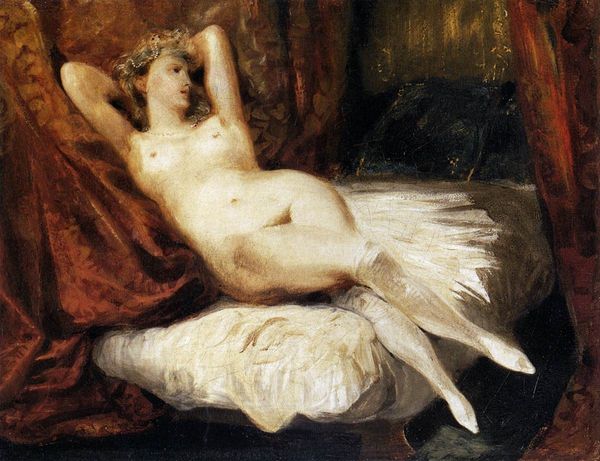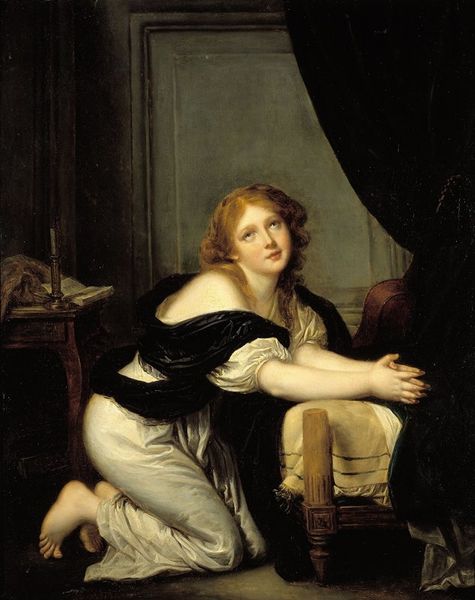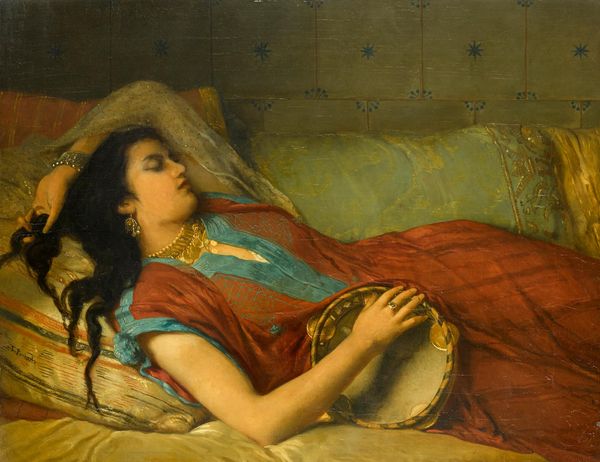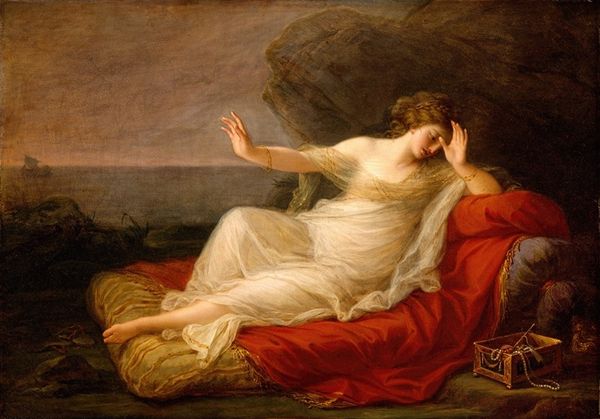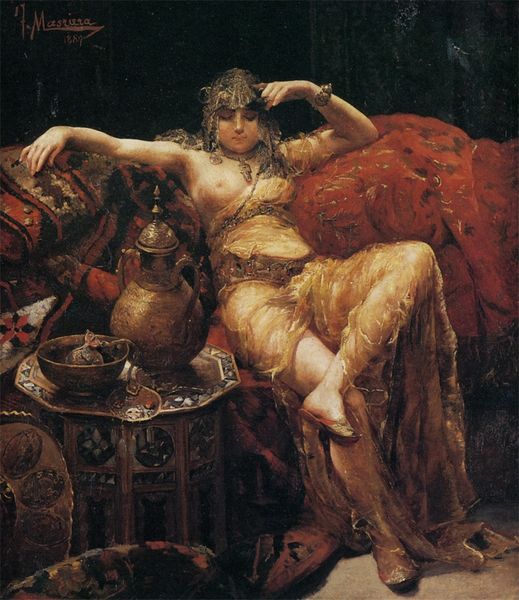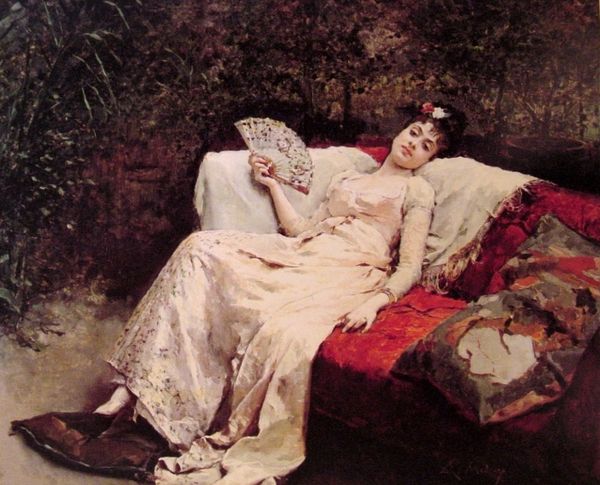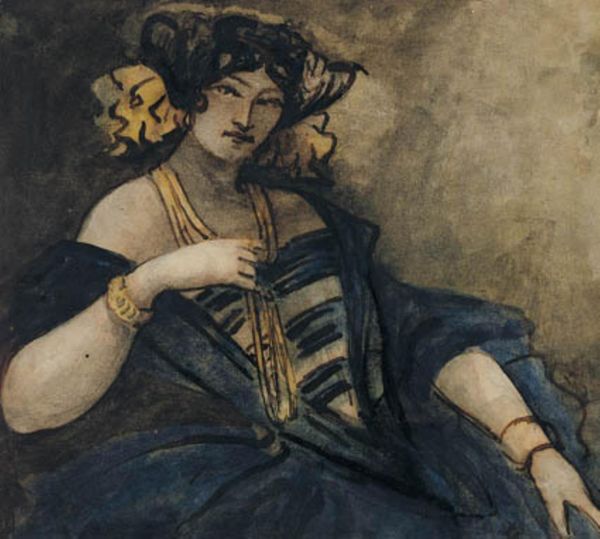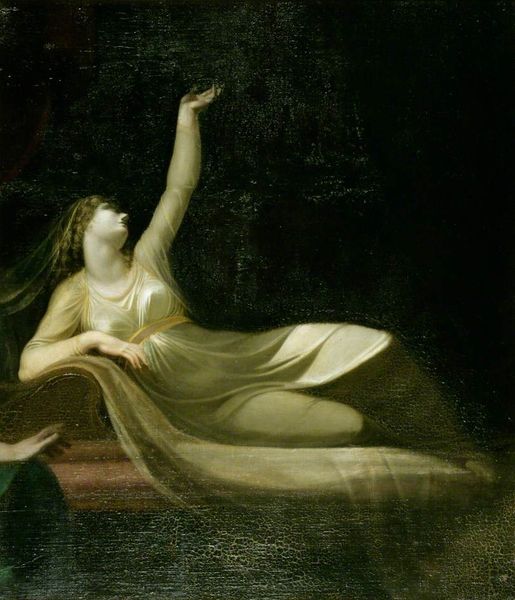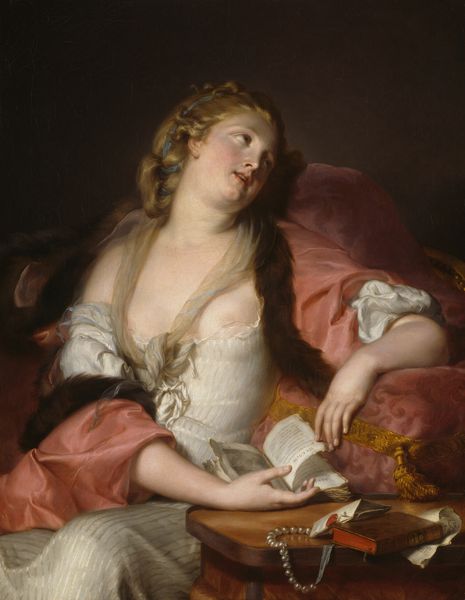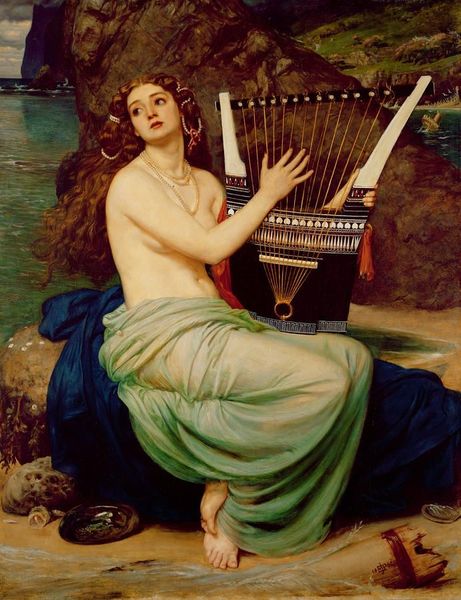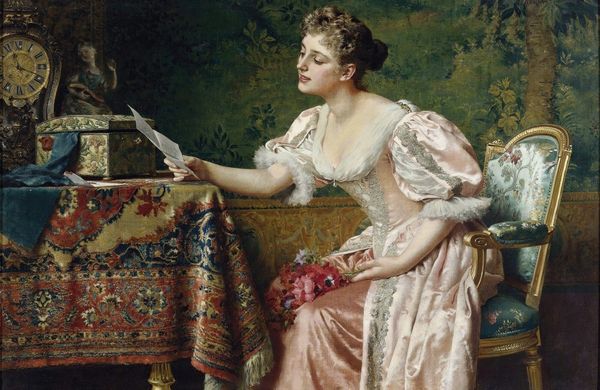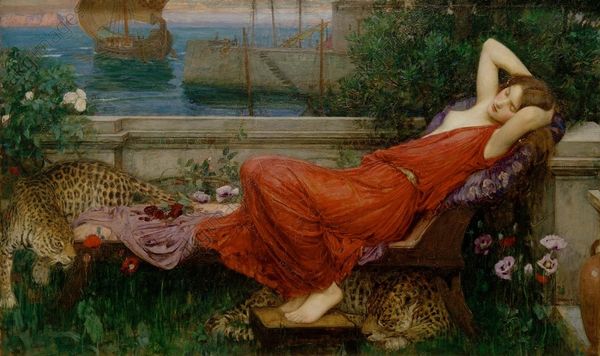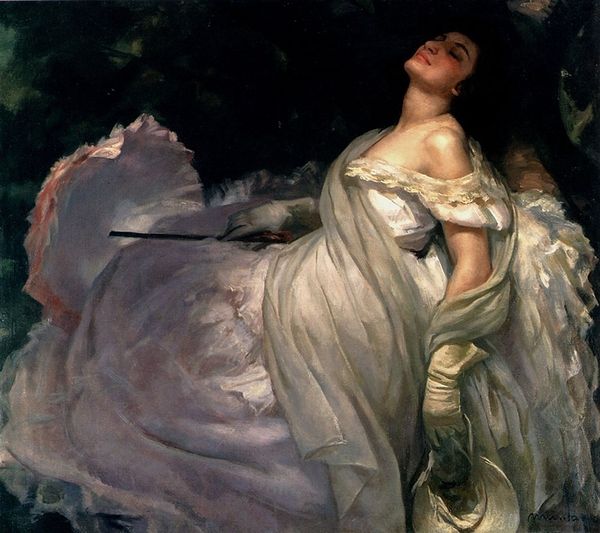
Portrait of the Joaquina, nee Tellez Giron y Alfonso Pimental, 10th Marquesa de Santa Cruz as the Muse, Euterpe 1805
0:00
0:00
franciscodegoya
Private Collection
painting, oil-paint
#
portrait
#
allegory
#
painting
#
oil-paint
#
oil painting
#
romanticism
#
mythology
#
history-painting
Dimensions: 125 x 207 cm
Copyright: Public domain
Editor: So, here we have Goya’s “Portrait of the Joaquina, nee Tellez Giron y Alfonso Pimental, 10th Marquesa de Santa Cruz as the Muse, Euterpe,” from 1805, rendered in oil. It’s striking how languid and theatrical the scene feels. How do you interpret this work? Curator: This work truly reflects the power dynamics of the period. We see how the aristocracy utilized artistic production to cement their social position. Notice the luxurious fabrics and the lyre, symbols of wealth and status carefully curated by Goya. Editor: That’s fascinating. The materials speak volumes. Is the use of oil paint itself significant? Curator: Absolutely. Oil allowed for rich colors and blending that conveyed the texture and luxury of the fabrics—all commodities dependent on extensive global trade and exploited labor. How does framing her as Euterpe, the muse of music, influence our understanding? Editor: Well, it elevates her, but almost seems to...appropriate her image. She becomes a symbol more than a person. Do you think Goya was consciously critiquing this dynamic? Curator: Perhaps. However, the commission itself signifies Goya's own position within the system. He benefited materially from depicting this constructed reality, participating in the cycle of production and consumption that upheld the social order. The history embedded in that canvas is as rich as the pigments themselves. Editor: I hadn’t considered how complicit he was simply by undertaking the project. It brings a whole new layer to my understanding. Curator: Exactly. Looking closely at art’s materiality—the "how" and "why" it’s made—opens a richer dialogue about power, labor, and the circulation of goods in any era. Editor: This has really broadened my view beyond just the aesthetic! Curator: Indeed. Art is a product and a mirror of its time, inextricably linked to the material conditions that make it possible.
Comments
No comments
Be the first to comment and join the conversation on the ultimate creative platform.
